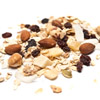| Maths in a minute |
|
Want facts and want them fast? Our Maths in a minute series explores key mathematical concepts in just a few words. From symmetry to Euclid's axioms, and from binary numbers to the prosecutor's fallacy, learn some maths without too much effort.
Visit the Maths in a minute library!
|
| Support Plus - make a difference to mathematics |
|
Plus is free for all, but to support our activities we depend entirely on donations and grants from organisations and individuals who share our commitment to making a difference to mathematics education and
engagement.
If you'd consider supporting Plus we'd be very grateful. Your generosity has a real impact, helping Plus to continue reaching millions of readers worldwide.
Support Plus!
|
|
|
|
Celebrating Stephen Hawking
|
|

The world is mourning the passing of Stephen Hawking. One of the greatest, and most famous, scientists of modern times Hawking will be sorely missed by his family and friends, his colleagues, the scientific community as a whole, and not least by us. We have put together a collection of articles by or about Hawking and his work.
Visit the Stephen Hawking collection!
|
READ MORE
|

Making penalties fairer
Is the proposed ABBA rule for penalty shootouts really fairer than the existing rule? Maths shows that it is, and also suggests another, more subtle rule.
|
READ MORE
|

Material maths
From bendy rocks to communicating crystals and invisibility cloaks — discover the fascinating maths of the materials that make up our lives.
|
READ MORE
|
|
Maths in a minute: The brazil nut effect
|
|

It is time for breakfast and you reach for your packet of cereal, which is a mix of muesli and nuts. As you pour the cereal into your breakfast bowl you find, much to your surprise, that you get a bowl full of nuts. That's is odd: have the large nuts have risen to the top of the muesli? If yes, then this seems to contradict our intuition that larger objects should go to the bottom.
What you have seen (literally) is an example of the brazil nut effect. It occurs because your cereal packet comes to you having travelled a considerable distance. (To learn more about the movement of food around the world have a look at this article.) During its travels it gets shaken up. It is the shaking which is the key to the brazil nut effect. As the cereal is shaken the nuts may move up a little, leaving gaps beneath them. The smaller and faster moving muesli then flows into these gaps. As it does so, so the nuts rise upwards. Eventually they get to the top of the cereal.
The brazil nut effect is just one of the counter intuitive properties shared by granular materials, which as the name suggests are materials made up of grains. Granular materials are very important in the food industry. For example, they make up the grain in grain silos, the are the basis of baby food, nuts, rice, coffee, chocolate, custard powder and many cereals such as cornflakes. Granular materials also occur naturally, with snow in large quantities being a good example, and sand another (find out more here). Many of the fascinating patterns seen in sand dunes are a consequence of sand being a granular material.
Another context in which granular materials play a role is in the manufacture and storage of paint powders, fertiliser, cement and even sand. Mathematics is used to predict how granular materials can flow. In some sense, granular materials do not constitute a single phase of matter, but have characteristics similar to solids, liquids or gases, depending on the average energy per grain. However, in each of these states granular materials also exhibit properties which are unique to them. Indeed, granular materials also exhibit a wide range of pattern forming behaviours when excited (e.g. vibrated as above, or allowed to flow).
Different behaviours arise depending on whether the grains can move freely over each other, or if they can get jammed. The latter is certainly what you don't want in a grain silo. Mathematics plays a critical role in predicting whether jamming will or will not occur, and by doing this helps to feed the world.
|
|
If you have any comments on this newsletter, or Plus Magazine, please contact us at [log in to unmask] - we are always happy to hear from our readers!
Feel free to forward this email to anyone you think might be interested.
Happy reading!
|
